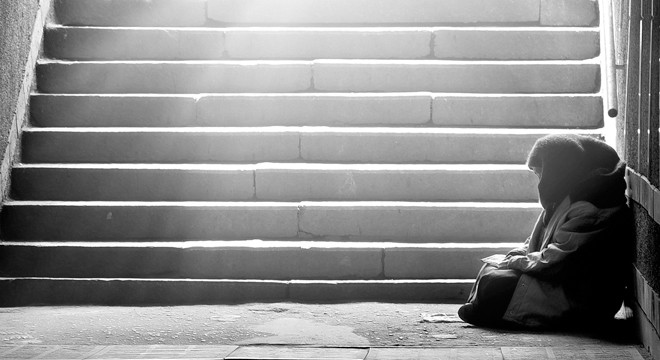Is There a Homelessness Problem in Mississauga?
Published May 19, 2016 at 2:36 pm

Earlier this month, insauga.com published a feature on the city’s mounting affordable housing crisis. After weeks of poring over reports and chatting with affordability advocates Carolyn Parrish and Habitat for Humanity, we discovered that housing is not simply out of reach for lower income residents — although that was always a given — but also for moderate-income earners who work full-time in professional occupations such as social work and journalism.
Now that affordability issues are top of mind, three Peel publications — the Mississauga News, the Brampton Guardian and the Caledon Enterprise — have launched a three-week special report on an issue even more dire than affordability gaps: hidden homelessness in the region.
Launched last week, the report examines the lives of three Peel-area people touched by homelessness.
“Homelessness impacts each individual differently, and in this special series, we have uncovered three unique individuals whose stories offer blunt reminders of how easily people can fall through cracks in society,” writes Rick Drennan for the Mississauga News. “These people – Greg Stevenson and Glenda King of Brampton, and Anita Goode of Mississauga – reached lower lows, as a poet once described it.”
Drennan points out a troubling and obvious truth: although Peel is a well-known economic engine in the country filled with clusters of million-dollar homes, it’s also home to people who cannot afford suitable accommodations (or, in some cases, any accommodations at all).
Drennan goes on to highlight some troubling statistics.
According to his article, only two per cent of Peel residents were considered low income back in 1980. Now, close to 50 per cent of residents fall into that category.
A lot has changed since the 80s and Peel is certainly not the only region affected by growing and dramatic discrepancies between wages and living costs. It’s no secret that many people’s incomes have not kept pace with the rising costs of housing, transportation and day-to-day necessities. It’s not surprising that people who might have lived comfortably on $50,000 a year in Mississauga in the 70s or 80s can no longer afford houses.
It’s also not shocking that more and more people cannot afford housing of any kind at all. Homelessness can no longer be dismissed as a big city issue that suburban dwellers need not concern themselves with. Homelessness — people-sleeping-in-their-cars-homelessness — exists in Peel and people are talking about it.
As of now, Peel is grappling with an appallingly long social housing waiting list — 12,077 people and families are currently in need. Drennan reports that there are about 169,000 to 195,000 people in the region that “experience poverty or are on the brink of becoming homeless.”
Drennan writes that the series will look at “systemic failures, the economic stresses and personal struggles that had led people to fall to the margins of existence.”
Another serious issue is youth homelessness. In an editorial for the Mississauga News, Patricia Lonergan writes that children and teens are too often overlooked in conversations about poverty.
“Our special report includes three personal stories from adults who had the courage to open up about their experiences with homelessness. Absent, however, are the personal stories of the thousands of homeless children in our community,” Lonergan writes. “Last year almost 4,000 children and youth used a shelter or transitional housing in Peel, while 450 teens were turned away from emergency shelters due to lack of space. These numbers don’t include those who instead sleep in cars, bed down on a friend’s couch or who are elsewhere, outside the system.”
As far as solutions go, governments are working to address issues of homelessness and housing affordability.
In terms of affordable housing (not necessarily homelessness, to be clear) Mississauga’s city council is currently reviewing a report on the city’s housing gap. While council has yet to implement any suggestions contained in the lengthy, detailed and troubling document, it is examining proposed solutions and contemplating best practices.
Drennan reports that the province of Ontario is planning to do its part by investing $178 million over three years to help connect needy residents with affordable (and adequate) housing and employment.
To learn more about a campaign to combat the problem, visit http://fnd.us/0185l8?ref=sh_75gbQ3
insauga's Editorial Standards and Policies advertising





